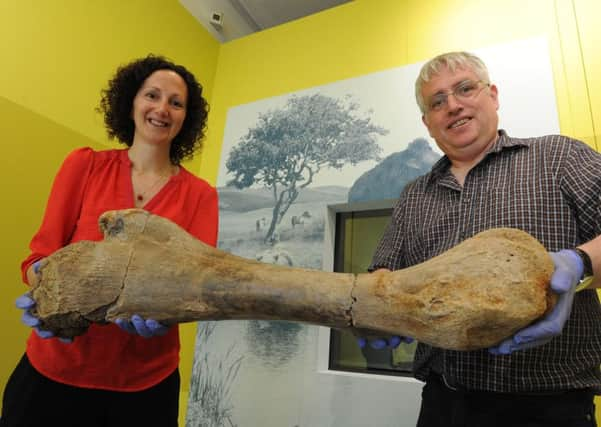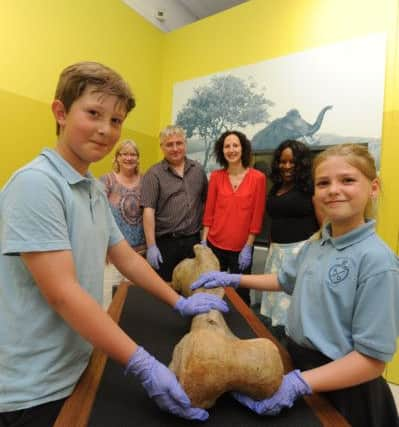Ancient exhibition turns back the clock


The Natural History Museum at Tring is launching Humans in Ancient Britain, inspired by 12 years of research from the museum’s scientists, on July 28.
The free exhibition in the Walter Rothschild building on the Akeman Street site tells the fascinating story of how our ancestors lived 900,000 years ago.
Advertisement
Hide AdAdvertisement
Hide AdRemarkable finds on display include the Swanscombe skull, from the earliest known Neanderthal in Britain; and the lower jaw of a lion found close by at Marsworth quarry, now College Lake nature reserve.


Other archaeological gems include a Neanderthal hand axe found at Burnham, Buckinghamshire; a Rhino pelvis bone from Boxgrove, West Sussex; a woolly mammoth leg bone discovered at Marsworth quarry and a sabre-tooth cat from Bacton in Norfolk.
The interactive display will let visitors get their hands on replica tools like those used by the earliest humans in Britain in their hunt for food, discover some of the incredible creatures that lived alongside them and come face to face with life-size Neanderthal models.
Professor Chris Stringer, palaeontologist and world-leading human origins researcher at the Natural History Museum, said: “You will be surprised by the history hidden beneath your feet.
Advertisement
Hide AdAdvertisement
Hide Ad“The story behind the humans who inhabited ancient Britain has taken us more than a decade to piece together. This gives us an exciting glimpse into our past, which also leads us to reflect on our future.”


Paul Kitching, head of the Natural History Museum at Tring, said: “By including some important locally discovered specimens, kindly loaned by Buckinghamshire County Museum, we are able to enhance this incredible and important story of our past and take the whole family on this fascinating journey.”
This journey through time reveals incredible details of the behaviour and way of life of our ancient relatives and leaves you pondering over your own place in this tale of human life in Britain.
The exhibition, which runs until November 6, is open from 10am to 5pm Monday to Saturday and from 2pm to 5pm on Sundays.
For more, visit www.nhm.ac.uk/tring